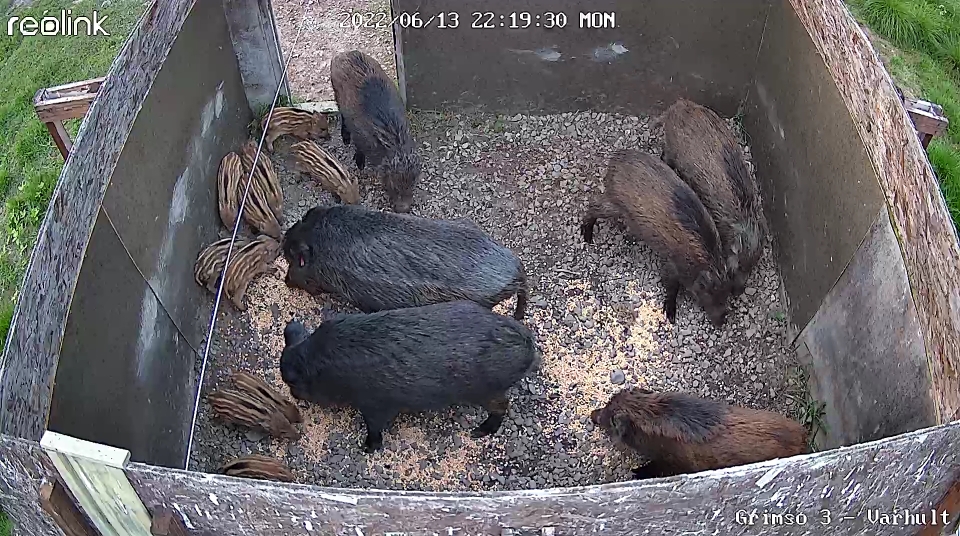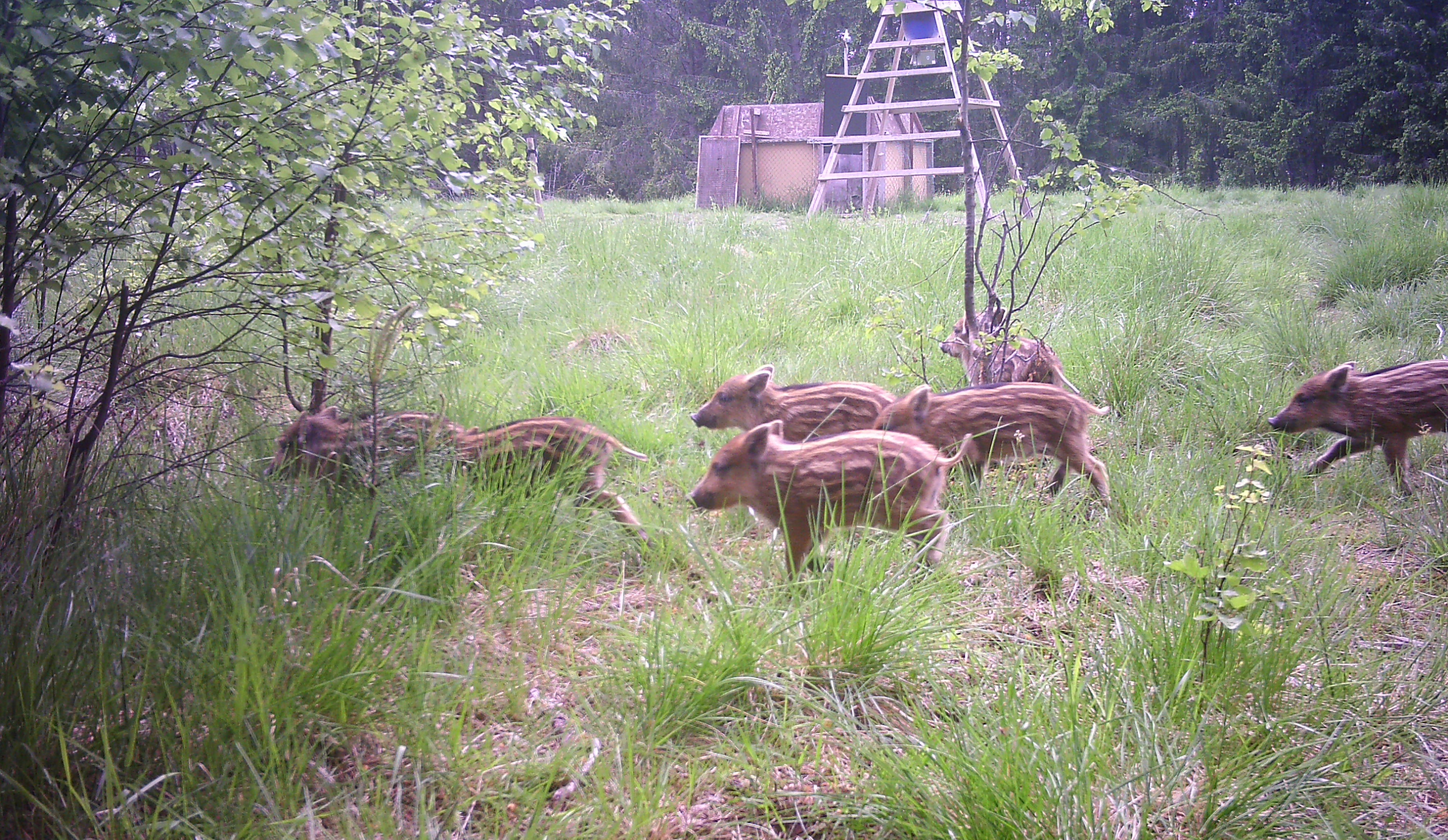The wild boar (Sus scrofa) project at Grimsö Wildlife Research Station explores several research topics, including, the effects of supplemental feeding on local boar populations and the surrounding habitat. Supplementary feeding is a management practice where attractive food and nutrients are supplied on daily basis at feeding stations. These feeders are often used in hunting to attract animals to a set location but are also used with the goal of shifting habitat use away from agricultural fields. This project explores whether feeders are an effective way to change wild boar movement within the landscape, protecting agricultural or other sensitive areas but also whether the extra feed over time induces changes in the field layer and plant composition around the stations.

An effective method to study these questions is to use marked animals. The project uses five different study areas in southern Sweden and has collected movement data from >60 GPS-collared and >300 ear-tagged wild boar. The fieldwork is partly done in collaboration with the landowners, an approach where both parties learn from each other.
GPS-collars and ear tags are fitted on adult animals, but during spring the main focus is on piglets. These animals cannot be equipped with heavy collars, due both to their small size and their fast growth but the advantage of tagging piglets is that, once successfully caught, they can be handled without immobilization. Animals with only ear tags do not contribute as much or as detailed information as animals with a GPS, but the marking procedure is comparatively simple and less costly.

The Swedish wild boar population has shown a remarkable increase in the last 15 years and population management is a frequent topic of debate among various stakeholders. Typical issues within the larger debate are; how to reduce boar damage to agriculture and how to evaluate their total cost, as well questions regarding the long-term effects of supplementary feeding of wildlife. These questions are complex and include aspects that may be difficult to study in general and also often vary between regions.
Several studies have been published on related topics in recent years, including numerous reports by stakeholder organizations, but many aspects are still unclear. Further knowledge obtained in projects like this is thus awaited and needed by authorities, managers, and land owners.